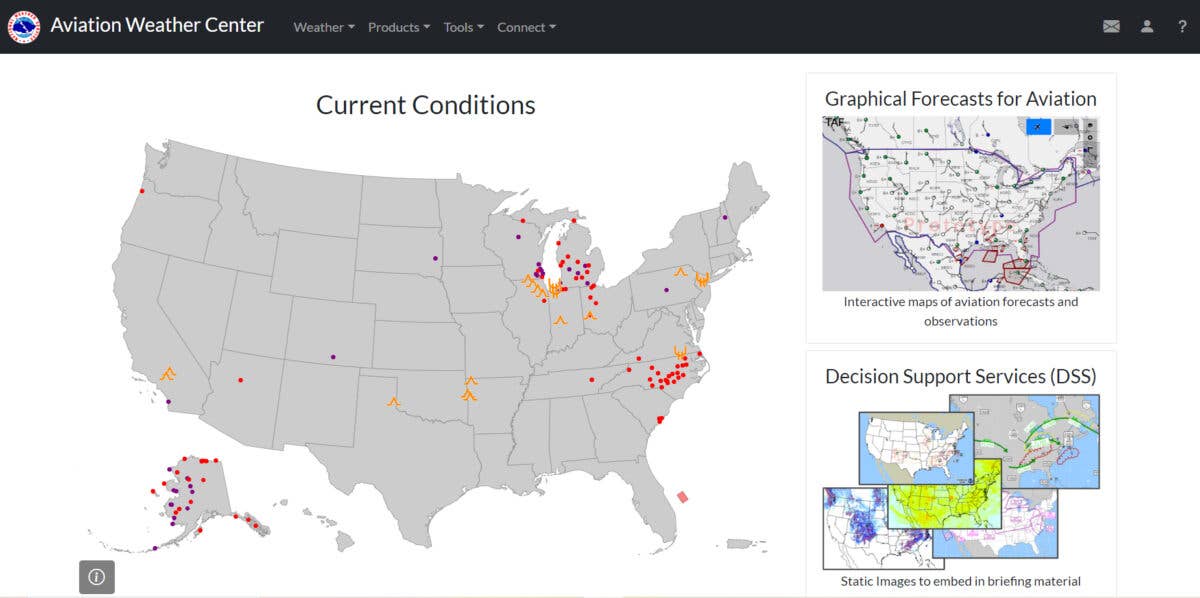Teaching Analog Skills in a Digital World
As we have progressed to a digital society, fewer and fewer learners and even instructors know how to use analog tools.

Learning new skills isn’t just for students. [Courtesy: NOAA]
"If you don't know something, don't try to b.s. the examiner. Look it up."
Do you remember getting this admonishment before your private pilot check ride? I do. It meant picking up the appropriate text—more often than not the FAR/AIM—and going to the back of the book to the index. The index was pretty easy to use as the words are arranged alphabetically. Sometimes it took a few tries to find what you were looking for—would the airspeed indicator be listed under airspeed or required instruments for VFR flight?—but with a little patience you could find it and follow the page number to the appropriate section.
As we have progressed to a digital society, fewer and fewer learners and even instructors know how to use the index in a paper book. In an e-book, it's easy. An algorithm does the work for you.
In a paper book, it is a little more involved, starting with the introduction of the user and the concept of an index. I have added this to the list of things I teach my clients, and occasionally, my coworkers.
I use the paper version with learners that are tactile and kinetic and learn better by holding a book in their hands and turning the pages. When the new versions come out, we make a game of making tabs to make it easier to find certain things—such as FAR 61.87 requirements for solo. You can buy the books pre-tabbed, but many learners find the task of making tabs and placing them in the book aids in the learning process.
That is not to say I don't also use the digital version: I do. Frankly, it doesn't matter if you get the information from paper or digitally. The important thing is you know where to find it.
Analog Clock
Can you tell time from an analog clock? The ability to read one is becoming a lost skill. I recently met a freshly retired high school teacher who told me that most of the kids in her classes cannot tell time from an analog clock. "They use their phones," she said.
This is concerning, because in aviation the analog clock is used as a reference to determine position, i.e. "traffic at your 3 o'clock." It is getting more difficult to convey this concept to learners, so much so that one CFI I know has taken to having learners set their smartwatches to an analog display or obtain a cheap analog watch to help them learn the directions that correspond to the numbers.
Aviation Weather.gov Gets a Makeover
Flight instructors have learning curves too. As I write this, I am learning how to use the redesigned version of NOAA's weather page, AviationWeather.gov. I have relied on the webpage for years for supplemental weather information.
- READ MORE: NOAA Changing Weather Site
For years, my day began by tapping on the icon on my smartphone, putting in “@WA” and clicking on TAFs and METARs, and in an instant the weather from every available airport in the state of Washington was displayed. That told me if the day was going to be spent in the air or on the ground. When it was an air day, Leidos briefings followed before each flight and ForeFlight followed us into the cockpit. Weather is a hobby of mine, going back to my fledgling television career where I figured if I was going to report the weather, I needed to know something about it.
The new AviationWeather.gov site offers a great deal of information on climate, severe weather, fisheries, etc. I can imagine it being a good resource for studying these topics. But it's an awful lot to wade through for a supplemental weather briefing.
Learning Takes Place
I watched the video tutorials. Because the new one has so much information, you need to go on a scavenger hunt to find what you want. The TAFs and METARs are buried under layers labeled “Tools and Resources.” A few times, I got the NOAA version of the "spinning beach ball of death" as I searched for things. There are more colored graphics on the new site, and if that is how you like your weather information presented, you're going to be a happy camper. If you prefer black and white text, the graphics are a lot of noise. The Terminal Weather Dashboard is confusing and hard to read, and although the redesign was supposed to make it easier to use on smartphones, I have not found this to be so.
I am not the only person having a challenge. The day the site went live hundreds of pilots, including many instructors, voiced their displeasure. A colleague noted that the weather is presented in the decoded form and predicted that this would "throw a monkey wrench into the knowledge tests" as learners are asked to decode weather reports.
There is no such thing as an FAA-approved weather briefing, but some products are better than others. I am partial to those that require a discreet login and can be customized so that a few keystrokes take you to the place you need to be. Some pilots find the app-based subscription products not worth the investment when they only fly a few times a year. Same goes for the budget-minded learner who'd rather spend the money on flight lessons.
I am still compelled to show the learners how to use 1800WXBRIEF.com to get a briefing and file flight plans since it does not require a paid subscription.
When was the last time you called 1-800-WX-BRIEF for a weather briefing? With the development of online applications, calling for weather has fallen out of favor. But until that option goes away, I want my learners to know how to get a weather briefing by phone, just in case their iPad, tablet or smartphone fails or goes missing. If the internet crashes or cell towers are jammed, you'll know how to use pay phones as well—granted, the most challenging aspect is likely finding one. You may end up borrowing the phone of the FBO in some cases.
Don't be intimidated. Follow the voice prompts and when you get the person, explain you are a student pilot, and they will walk you through the process. It is not that difficult, and you can check that off your “have to try it at least once” list, treating it like it is the aviation version of going to the L.L. Bean store in Maine and getting your picture taken in front of the giant boot. If you have the opportunity, make it happen.

Subscribe to Our Newsletter
Get the latest FLYING stories delivered directly to your inbox






